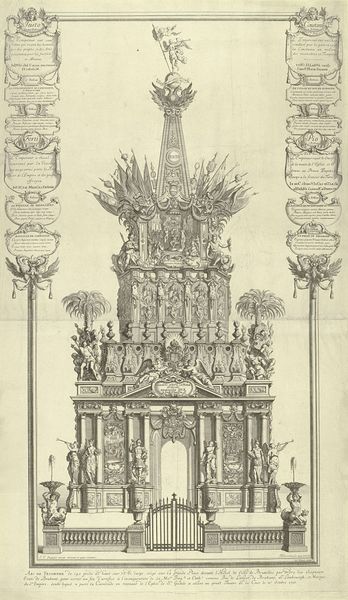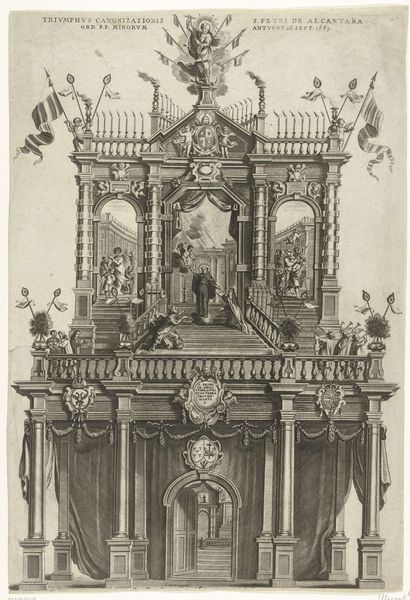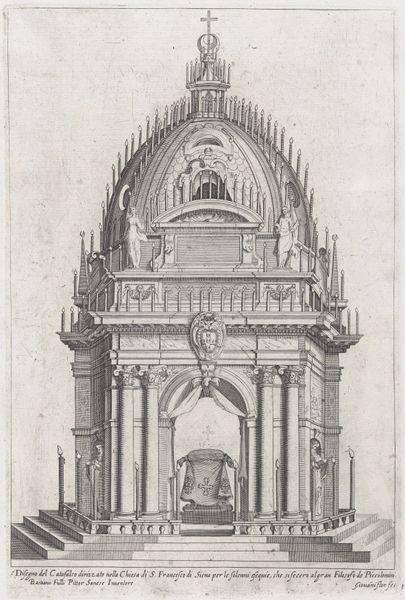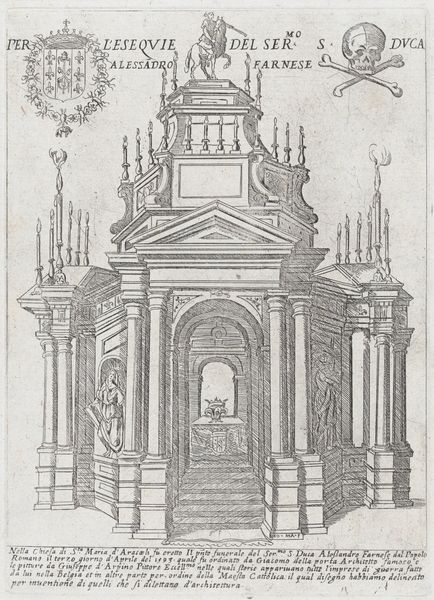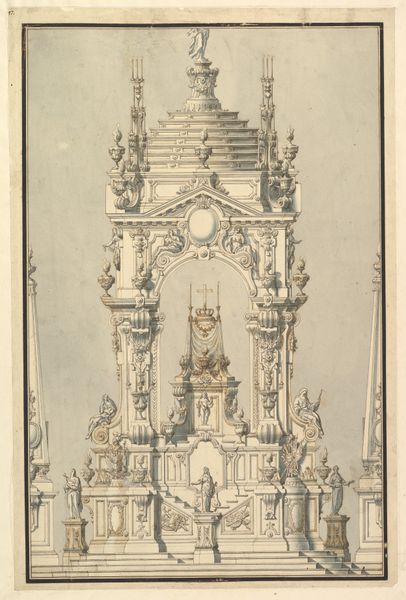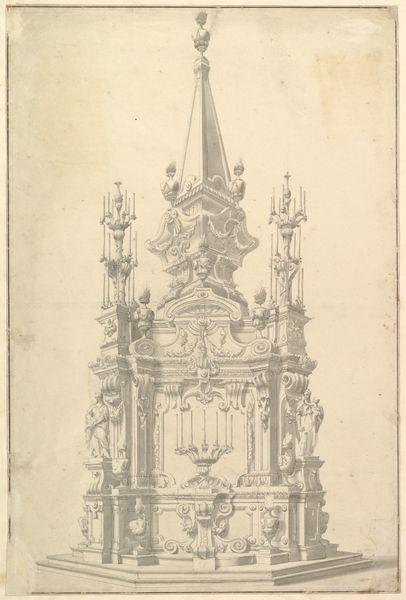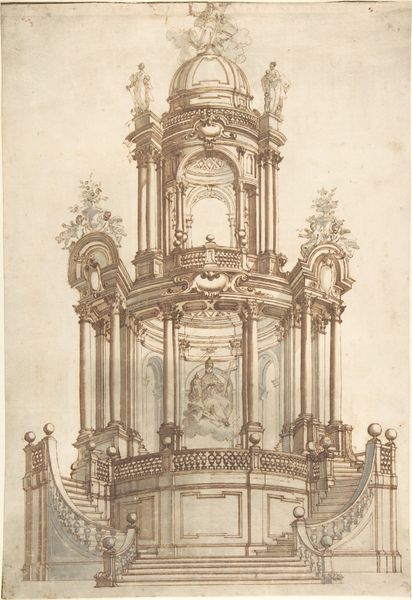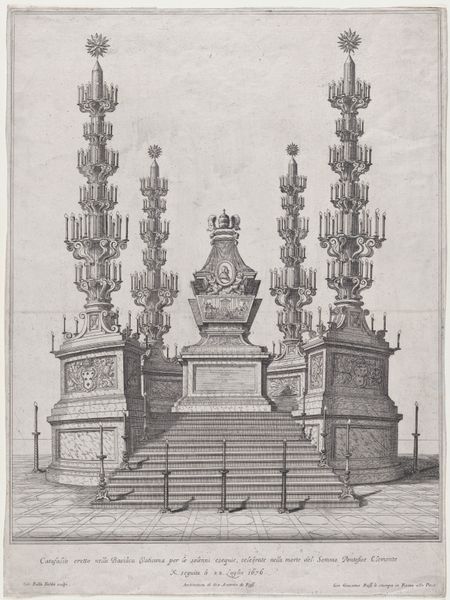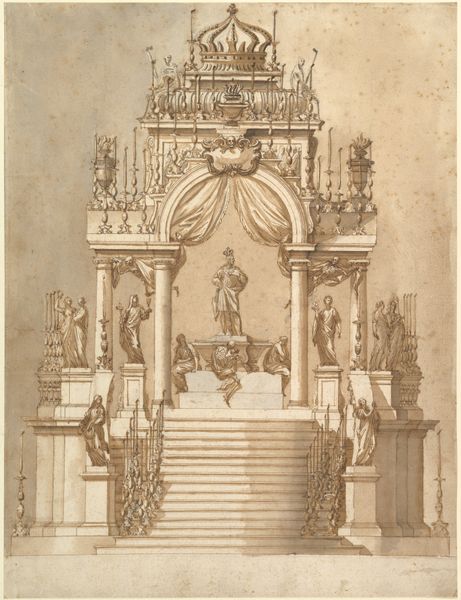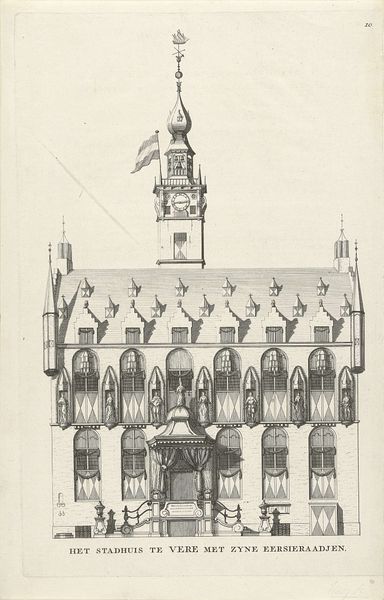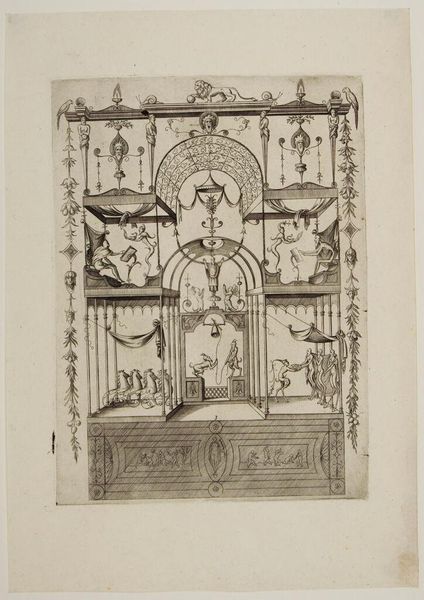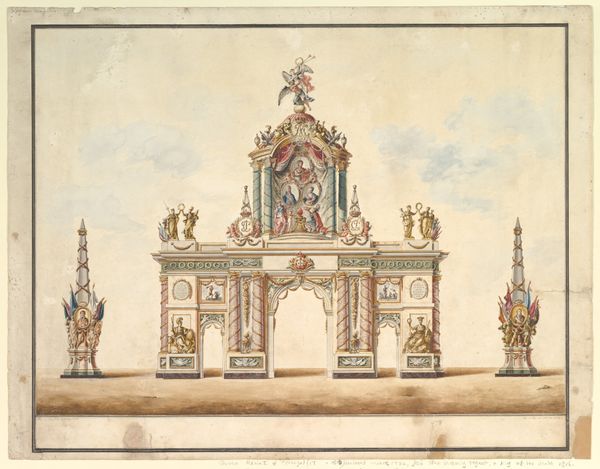
De katafalk voor keizerin Elisabeth Christine te Brussel, 1751 1751
0:00
0:00
drawing, ink, pencil, architecture
#
drawing
#
allegory
#
ink
#
pencil
#
history-painting
#
architecture
#
rococo
Dimensions: height 422 mm, width 262 mm
Copyright: Rijks Museum: Open Domain
Curator: This ink and pencil drawing is entitled "The Catafalque for Empress Elisabeth Christine in Brussels, 1751." It was created in 1751 by Ferdinandus Josephus de Rons, and demonstrates a very specific moment in courtly life. Editor: It feels remarkably serene given the subject, almost architectural. The drawing renders this grand structure with so much ornate detail. There's an implied reverence in its symmetry and the way the eye is drawn to that central crown. Curator: The catafalque was a temporary structure, erected in a church for the lying in state of Empress Elisabeth Christine. What strikes me is how even in death, imperial power required elaborate staging. This was a public spectacle, meant to reinforce the legitimacy of the Habsburg dynasty. Editor: Exactly. And it's replete with symbols. Notice the figures adorning the sides – probably virtues or personifications of Habsburg power. Above them, that triumphant angel perched atop the dome? The imagery assures us that earthly power translates into divine grace, even posthumously. Curator: It is interesting how the Rococo style—normally associated with frivolity—is here adapted for such a solemn occasion. Look at those delicate spires flanking the main structure and all the intricate ornamentation. Death becomes a performance of power and piety. Editor: Indeed, and the sheer scale of the structure, though captured in a drawing, still conveys a sense of awe. That crown is such a focal point. Death here, is not the end. The crown endures. Curator: The drawing itself is a form of commemoration. By recording this event, the artist immortalized both the Empress and the spectacle of Habsburg power. It's a fascinating example of how art served the purposes of political propaganda. Editor: It shows how images really create the story. From an Iconographer's perspective, its lasting impact lies not only in remembering her death, but the perpetuation of her role. Curator: A powerful role conveyed through powerful symbolism. Editor: Very insightful analysis.
Comments
No comments
Be the first to comment and join the conversation on the ultimate creative platform.


